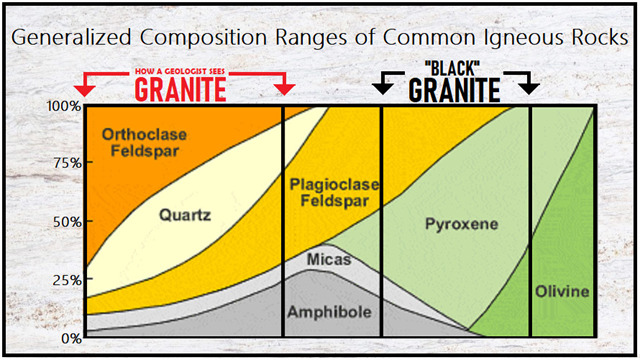This is an Earthcache – as such, there is no physical cache. Instead you will partake in a geology lesson by making observations and answering 3 questions about the "black granite" memorial at the posted coordinates.
The Immaculate Reception
At this location you will find a memorial marking the exact spot in 1972, where Franco Harris caught the game winning touchdown ball that gave the Pittsburgh Steelers it's first playoff win in franchise history. To football historians this play is regarded for being one the NFL's greatest plays, as well as being one of the NFL's most controversial plays. To the rest of the football loving world this play is popularly known as "The Immaculate Reception."

Even though the old Three Rivers Stadium no longer stands, the location of this play was heavily researched, and the exact spot where Franco Harris caught the deflected ball was determined with Global Positioning System (GPS) technology. This memorial was placed between today’s Heinz Field and PNC Park, and dedicated on December 23, 2012 in recognition of the 40th anniversary of the Immaculate Reception. It consists of bronze plaques mounted on a memorial of Black Pennsylvania Granite.
The Granite Deception
Commercial granite dealers lump a wide variety of rock types under a broad category called "granite." Black dimensional stones like the one here are known on the international market as “black granites” because their strength and hardness are similar to those shown by granitic rocks. To a geologist these rocks would be classified as gabbros, norites, anorthosites, diorites, dolerites, and basalts. Most of them are considered mafic rocks, except for anorthosite, which is classified as a felsic rock.

Much of the black granite used in the United States is imported from India or South Africa. The black granite featured here at the Immaculate Reception Memorial was quarried in Pennsylvania. Very few areas of the world have this quality of black granite, and here in Pennsylvania the main quarry for black granite is in Elverson. Located in northwestern Chester County lies a large intrusive body of dark gray to black, fine- to medium-grained, intrusive igneous rock with white veining. Commercially sold as American Black Granite, to a geologist this black rock is actually diabase formed during the Jurassic Period.

Diabase, like granite, is an igneous intrusive rock. That is, it formed from cooling magma over a long period of time underground. Diabase is similar to basalt. The big difference is that Basalt is an extrusive igneous rock that cooled fast above ground from lava. Both intrusive and extrusive igneous rocks differ in only how quickly they have cooled, both types darken as the transition from felsic to ultramafic composition occurs.

Diabase is a rock that has a composition similar to basalt and gabbro. The difference between diabase, basalt, and gabbro is in the size of their grains.
 Grain size is determined by their cooling rates. The longer it takes to cool, the larger the grains become. Diabase has a crystal size between that of basalt and gabbro. Absolute Black is aphanitic with a grain size between 0.1 and 0.2 mm. Fine Black is a fine-grained has a grain size between 0.3 and 0.5 mm. Normal Black has a grain size between 0.6 and 0.8 mm, and the Coarse Black is coarser than 1 mm.
Grain size is determined by their cooling rates. The longer it takes to cool, the larger the grains become. Diabase has a crystal size between that of basalt and gabbro. Absolute Black is aphanitic with a grain size between 0.1 and 0.2 mm. Fine Black is a fine-grained has a grain size between 0.3 and 0.5 mm. Normal Black has a grain size between 0.6 and 0.8 mm, and the Coarse Black is coarser than 1 mm.
LOGGING REQUIREMENTS:
To log this Earthcache: Read the geology lesson above. Answer all three questions posted below. Answers can be sent via e-mail or messenger contacts on my Geocaching profile within a reasonable time. Group answers are fine, but please include the members of the group you are with.
QUESTION 1. American Black Granite from Elverson, Pennsylvania is what rock?
A) Diabase
B) Dolemite
C) Pyrite
QUESTION 2. Using the "Generalized Composition Ranges of Common Igneous Rocks" diagram... What mineral does "Black Granite" have that Granite does not? (CHOOSE ONE)
A) Quartz
B) Orthoclase Feldspar
C) Pyroxene
QUESTION 3. How thick is the average white veining of the American Black Granite? (CHOOSE ONE)
A) Smaller than a dime (17.9 mm)
B) About the size of a nickel (18 mm to 24.25 mm)
C) Larger than a quarter (24.26 mm)
OPTIONAL PHOTO: Posting a photo that readily indicates that you (and anyone else logging the find) are at the location.
 Awesnap has earned GSA's highest level:
Awesnap has earned GSA's highest level:

REFERENCES:
1. Granite Vs Gabbro: Similarities and Differences, March 7, 2018, website, geologyin.com
2. An "immaculalet reception' in Pittsburgh, Dave Mackall, The Daily Item, December 23, 2012, Pg.C4, Newspaper, newspapers.com